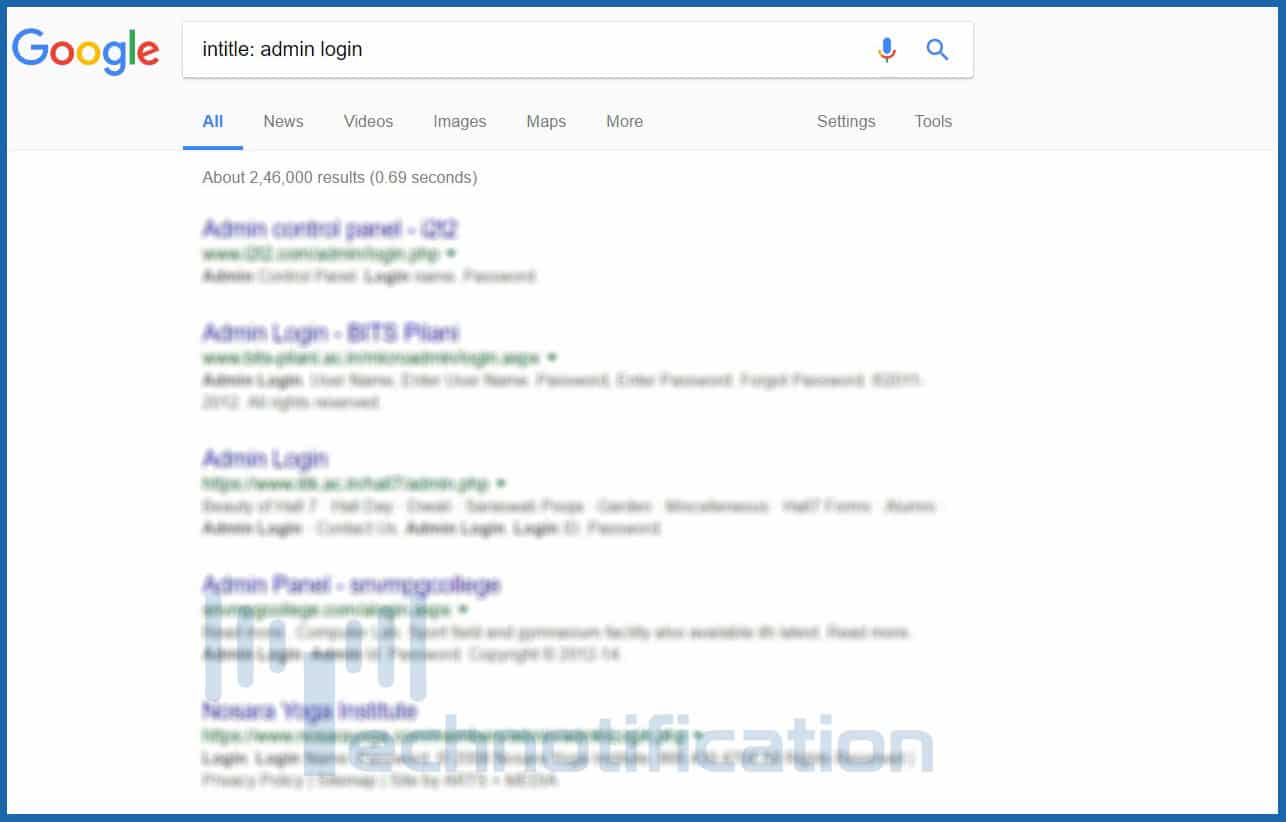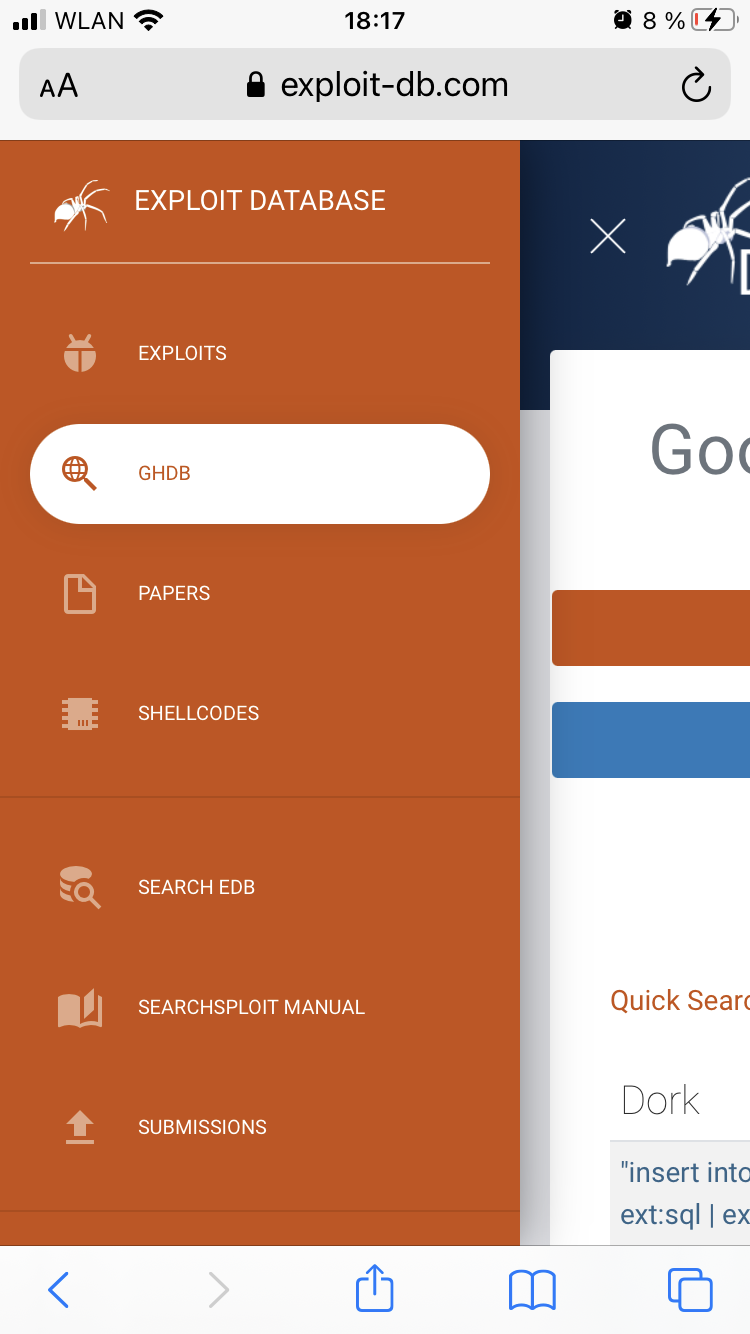
The above examples only touch a small number of the cases collected by Johnny Long in the Google Hacking Database (GHDB). The hacker has the vulnerabilities identified for him/her. This is a list of vulnerabilities found in servers generated by the Nessus scanner that were not deleted from the servers after it was run. "This file was generated by Nessus" and see the results here.
Google hacking database password#
This is a list of files containing username and password in databases. filetype:properties inurl:db intext:password and you can see the results here. Exploring filetype, inurl and intextto find DB passwords, e.g.We will discuss UNIX/Linux vulnerabilities, the use of shadow passords, etc, later in the course. The damage here can be devastating, if the root password is available, as in one case it is. This is a list of usernames and encrypted passwords for login in servers. filetype:bak inurl:"htaccess|passwd|shadow|htusers" and you can see the results here. Exploring filetype and inurl to find password files in servers, e.g.The damage here is defacing a Web site, but users tend to repeat username and passwords elsewhere.
Google hacking database crack#
As we will study later in the course a hacker can use John the Ripper to crack the password using brute force. This is a list of usernames and encrypted passwords. filetype:pwd service Note that pwd is not one of the types listed above, but Google still looks for d and you can see the results here.

Google hacking database software#
This is a list of servers running VNC in port 5800 (we will study VNC as a remote control software and its vulnerabilities later in the course). "VNC Desktop" inurl:5800 You can see the results here. Exploring server messages in the URL, e.g.This is a list of servers running what is in the message, in the case IIS 4.0. intitle:"Welcome to IIS 4.0" You can see the results here. Exploring title messages from servers, e.g.Note: the examples selected below follow the textbook for easy reference by the students. Johnny also maintains the Google Hacking Database (GHDB) with known uses of Google search for hacking. The main on-line reference continues to be The Google Hacker's Guide (pages 14-26) by Johnny Long. Google keeps a list of filetypes it can search at, summarized below:.Most of these operators are straightforward, but a few require additional explanations, as follows. The following table summarize these operators. Google operators allow powerful searches, and use the format operator:search.

"how nice of you." You can use mixed searches combining words with phrases, e.g.

There are books ( 1, 2) published on this topic, therefore this is only a brief overview of these tools and techniques. It does not store any personal data.This is an introduction to the use of the Google search tools for obtaining information about organizations, servers, vulnerabilities, usernames, encrypted and clear text passwords, etc. The cookie is set by the GDPR Cookie Consent plugin and is used to store whether or not user has consented to the use of cookies. The cookie is used to store the user consent for the cookies in the category "Performance". This cookie is set by GDPR Cookie Consent plugin. The cookie is used to store the user consent for the cookies in the category "Other. The cookies is used to store the user consent for the cookies in the category "Necessary". The cookie is set by GDPR cookie consent to record the user consent for the cookies in the category "Functional". The cookie is used to store the user consent for the cookies in the category "Analytics". These cookies ensure basic functionalities and security features of the website, anonymously.

Necessary cookies are absolutely essential for the website to function properly.


 0 kommentar(er)
0 kommentar(er)
